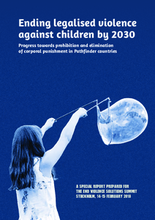Displaying 191 - 200 of 320
The authors of this study estimated the effect of household dysfunction (i.e., interparental violence, caregiver mental health problems, and caregiver substance abuse) on child maltreatment to understand how to advance the current framework of child welfare.
This study investigated the relationship between congenital conditions and post-adoption mental disorder diagnosis and treatment in 235 female youth who were adopted from China about 15 years prior.
The Global Social Service Workforce Alliance is seeking a national-level consultant for a mapping and assessment in Cambodia, China, Indonesia, Mongolia, and Vietnam.
The Global Social Service Workforce Alliance is seeking a regional consultant in East Asia and the Pacific.
Jessica Walton, the author of this piece from the Conversation, uses the Winter Olympic games in South Korea as an opportunity to examine social issues in the country, particularly its legacy of intercountry adoption.
Prepared for the Agenda 2030 for Children: End Violence Solutions Summit, held in Stockholm, Sweden, on 14-15 February 2018, this report tracks progress towards prohibition and elimination of corporal punishment of children in Pathfinding countries.
This study aimed to investigate the penetration rate of child protection teams (CPTs) in medical institutions and associations between CPT functions and hospital services.
For over three years, a photographer traveled throughout rural China capturing portraits of China's "left-behind" children, whose parents have left them in the care of relatives as they go to work in the cities.
Eighteen Korean-born adult adoptees in the United States plan to travel to South Korea during the Winter Olympics to meet with lawmakers about reforming adoption laws in the country, according to this article from KVAL.com.
In the current study the authors examined associations between children's pre-adoption experiences (type of pre-adoption care and early deprivation) and their adaptive and maladaptive behavioral adjustment.



